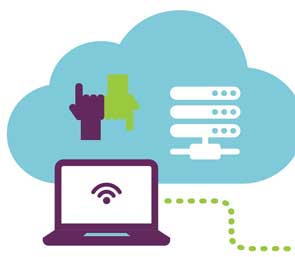 In this post we’re summarizing customer service best (and worst) practices from a recent contact center white paper. Many organizations rely on call centers as an entry point for inbound customer communication. We’ve all been there, frustrated and trapped without the option to connect with a real human to resolve our problem. Yet as IT professionals, we all know that our customer service can either delight or frustrate our customers. In these examples I use the generic term “customers”, but the same holds true for other industries: Guests in hospitality, alumni/students in education, citizens/constituents in government, etc. Here are a few best practices to make sure we end up on the right side of the equation.
In this post we’re summarizing customer service best (and worst) practices from a recent contact center white paper. Many organizations rely on call centers as an entry point for inbound customer communication. We’ve all been there, frustrated and trapped without the option to connect with a real human to resolve our problem. Yet as IT professionals, we all know that our customer service can either delight or frustrate our customers. In these examples I use the generic term “customers”, but the same holds true for other industries: Guests in hospitality, alumni/students in education, citizens/constituents in government, etc. Here are a few best practices to make sure we end up on the right side of the equation.
Best Practice: Map level of service to value
The key here is to determine and track the customers (or category of customers) that offer you the greatest value and offer them the most appropriate experience. This doesn’t simply have to be about revenue, but could be based on their product or support agreement, or if they’re currently engaged with your sales team. Mapping premium customers to the queue with the shortest wait time, sending them to the most ideal agents through skills-based routing and providing agents with screen-pops with all their pertinent information will maximize efficiencies and business outcomes. This also allows the agent to address the customer by name and reinforce their importance to your company. Call center managers love agent efficiency and like to keep call times short, but the opposite could be true in the case of premium customers. In this case, agents could be rewarded for spending more time with these callers. With the right technology in place, you could have knowledge workers as overflow agents for select customers. This flexibility provides additional ROI of unified communications. Other ways of fast tracking your high value customers include routing them immediately to a live person if they call from a recognized number or you could provide them a direct or priority access number.
Worst Practice - The flipside is to treat every customer the same. Sometimes we try to design the one end all-be all process that puts everyone in the same queue and maps numerous options for every type of call imaginable. As mentioned above, sometimes the drive for shorter wait times and agent goals end up conflicting with the best business outcome. We understand minimizing talk time to increase efficiency stats, but it’s not for every caller. The same goes for self-service options. Don’t force everybody through the same self-service options when you can recognize customers and provide a better level of service.
Best Practice: Communicate proactively
Outbound communications do not necessarily have to be calls (which are often expensive). They can be automatically generated emails (which are cheap). It’s a good idea to proactively contact customers when you have information they need. An example would be sending notifications to same-situation customers. If there’s a known issue you’ve identified in one customer that requires attention and it’s likely to impact others, then notify everyone with the solution. This type of outbound notification can save significant amounts of time and resources for your inbound team. An additional benefit to this type of effort is that it will be perceived in the customer’s mind as exceptional service.
Another example is status updates. You can send notifications when a reported issue changes status (i.e. it goes from “reported” to “in process,” or from “in process” to “resolved”). This information, along with the expected time of delivery or resolution, will be greatly appreciated. Most importantly, when customers know they’re receiving the most up-to-date information, they’re not calling in and tying up your agents. In general, outbound communications are less expensive than inbound communications. When you know the answer to the likely question, it’s more efficient to provide it proactively. Unlike inbound, where the issue is unknown and may require a time consuming discovery process for the agent, outbound communications can be planned in advance.
Worst Practice - Wait for your customers to call you. If you simply wait for customers to call your service department, you’re basically waiting until either they: (a) have a problem serious enough to call, or (b) have gotten really impatient about something they have not yet received. Either way, they are unhappy.
Best Practice: Make communications simple and flexible
The key is to offer customers a number of ways to easily contact you and get the information they’re looking for. The preferred contact method will vary from customer to customer, so it’s important to have all your bases covered. Some want to talk to a live agent no matter what. Some prefer email, chat, or other self-service options to answer their questions or perform transactions. Contact center managers like these options because it lowers costs and improves efficiency by eliminating agent involvement in unnecessary, repetitive interactions. Examples include: account balance, automated bill payment, flight status, service renewal, news/weather/sports access, and so on. These examples are characterized by minimal customer input, involve limited choices, and provide simple and expected feedback.
In addition to numerous contact options, they must be easy to use. Put self-service options requiring more input or more choices on the Internet. Options that require limited input and choice can be both on the Internet and on your Interactive Voice Response (IVR).
For customers that prefer to talk to a live person, offer Callback options to eliminate the need to wait on the phone. The best contact center technologies allow customers to select an option that enables them to simply hang up the phone, but retain their position in queue. When their time comes, the technology automatically calls them back and connects them to a live agent. This works great when the caller is on a mobile phone. And it is a great differentiator – customers perceive this as exceptional service.
Email, Web Chat, and Instant Messaging are perfect options for customers that need agent involvement, but prefer not to wait in queue. Custom apps for mobile devices are continuing to increase in popularity. Additionally, social media is gaining in popularity as a form of customer service, but this is most commonly after one of the traditional forms of customer contact fails. So it’s important to monitor the social channels where your customers are discussing your brand. These tools allow you to identify both positive and negative comments and you can add these mentions to your customer service queue to track to resolution.
Worst Practice - Give them a lot of IVR options in an attempt to maximize self-service. We all cringe when we know we are in for a long session with an automated IVR, especially when there is no way out. Redirecting customers to self-service options can be annoying. Chances are they have considered the options and rejected them. They need to talk to someone and it’s our job to make that easy to do.
To learn more about the best (and worst) practices in customer communication, download the full white paper.


 The benefits of SIP trunking go beyond cheaper connectivity in the form of simplified architecture, redundancy, scalability, and other benefits for your business. In our
The benefits of SIP trunking go beyond cheaper connectivity in the form of simplified architecture, redundancy, scalability, and other benefits for your business. In our 
 We often hear about the cost saving aspects of Session Initiation Protocol (SIP) as a way to reduce costs. This post and the white paper below will look at additional benefits of SIP, provide implementation best practices, and additional educational resources. We cover the basics to get everyone on the same page and then get into the challenges, calculations, and steps required for a successful project.
We often hear about the cost saving aspects of Session Initiation Protocol (SIP) as a way to reduce costs. This post and the white paper below will look at additional benefits of SIP, provide implementation best practices, and additional educational resources. We cover the basics to get everyone on the same page and then get into the challenges, calculations, and steps required for a successful project. Many organizations are improving communications through the virtualization of real time applications such as voice and unified communications (UC). All the financial and practical benefits of traditional server virtualization still apply as companies consolidate voice and UC into their data center. Namely: reduced capital expense, improved efficiencies, reduced risk, plus the savings on operational expenses since voice and UC can be managed with all other business applications on shared infrastructure.
Many organizations are improving communications through the virtualization of real time applications such as voice and unified communications (UC). All the financial and practical benefits of traditional server virtualization still apply as companies consolidate voice and UC into their data center. Namely: reduced capital expense, improved efficiencies, reduced risk, plus the savings on operational expenses since voice and UC can be managed with all other business applications on shared infrastructure. 


 Whether you’re thinking about deploying a cloud, premises-based or hybrid approach to unified communications, there are a number of factors to be considered.
Whether you’re thinking about deploying a cloud, premises-based or hybrid approach to unified communications, there are a number of factors to be considered. 






